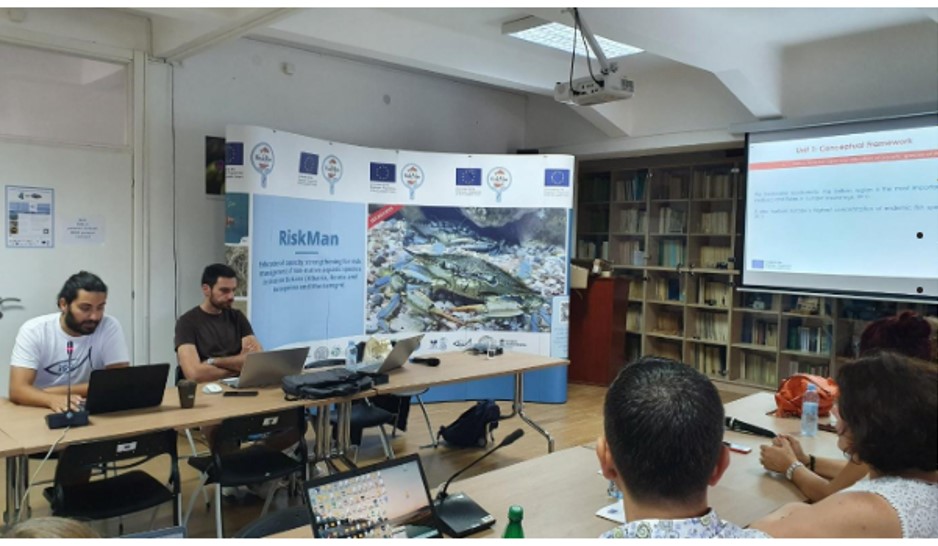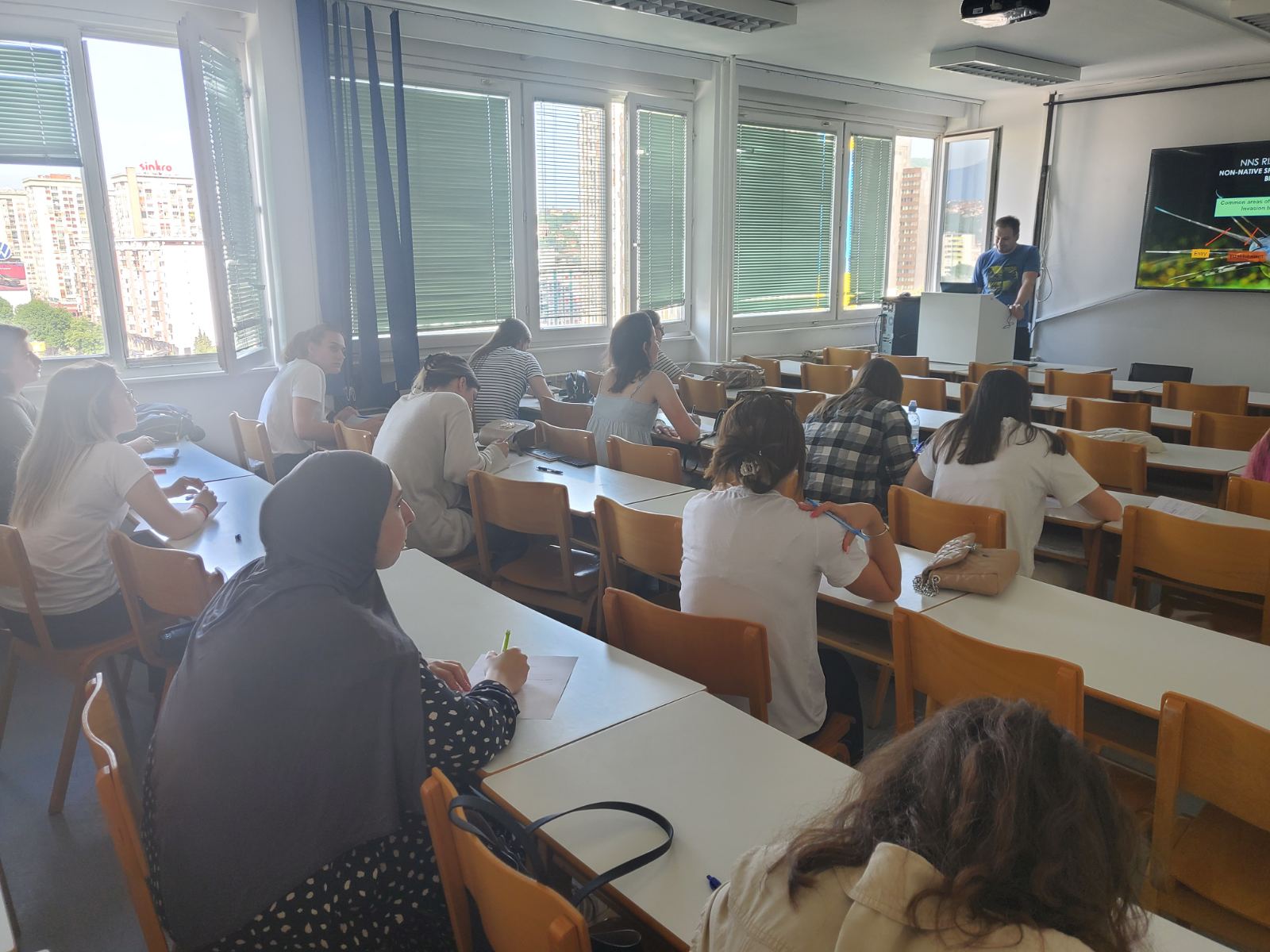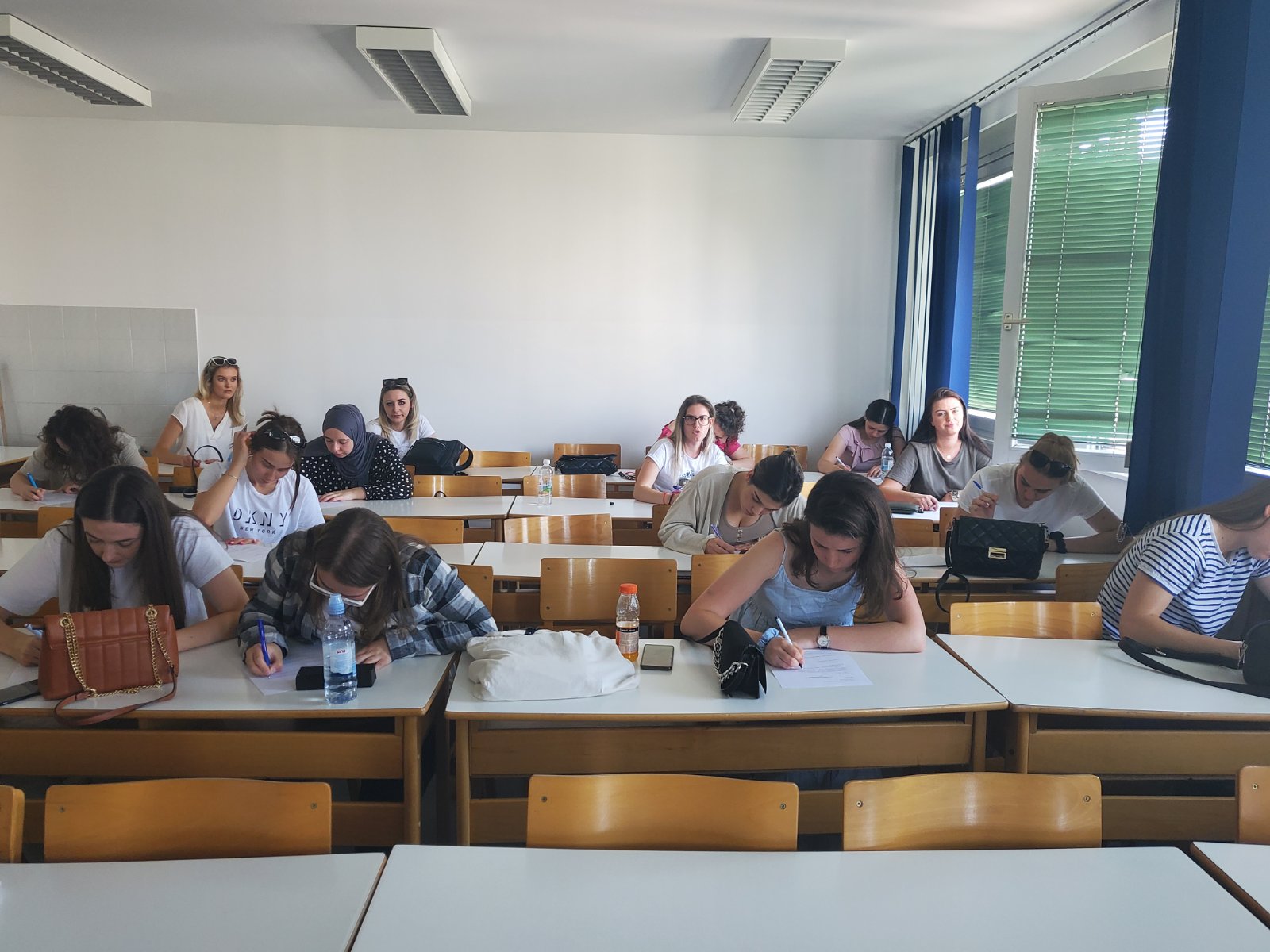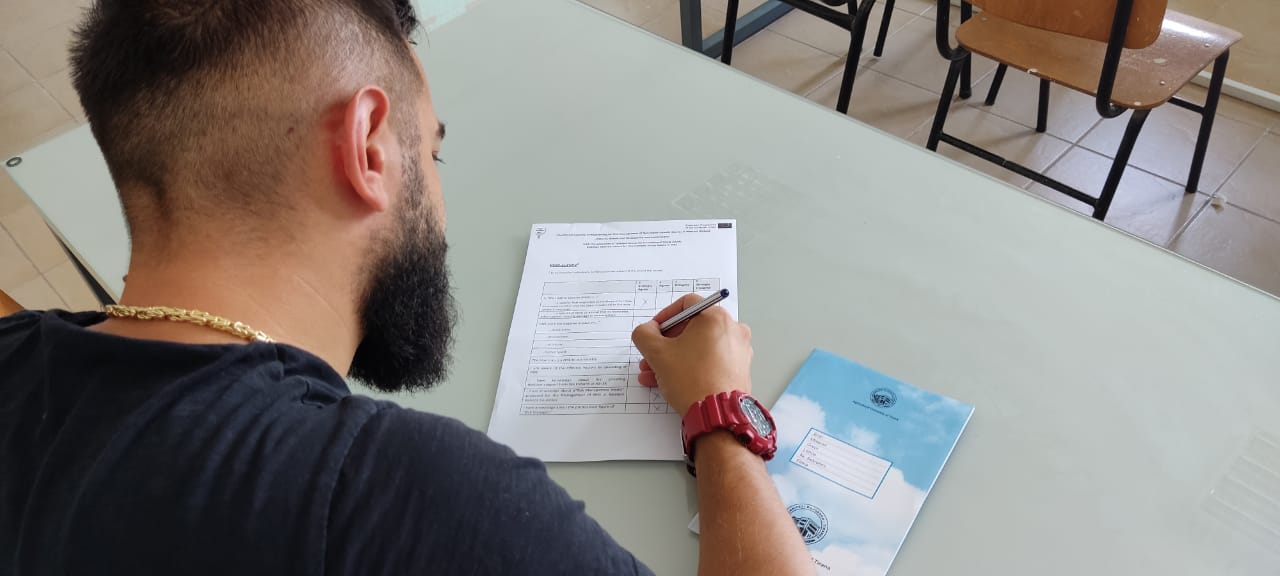WP5 Development of Tailored Course for Unemployed Young Adults
WP5: Summary of Results
Course Description: As stated by Food and Aquaculture Organisation (FAO) ... “aquaculture requires high levels of skill and professionalism there is a need for training and education of fish producers. Information, dissemination, and educational and training programs need to be encouraged to ensure the development of aquaculture". Since aquaculture, aquarium trade and fisheries sectors are growing up rapidly in WBs, new job opportunities for young adults were foreseen in these countries. The preliminary analysis carried on by the RiskMan Consortium highlighed the lack of experienced and specialized staff and lack of awareness of employees of these sectors about the risk posed by the spreading of aquatic NNS.
Target of the Courses: unemployed young adults of WBs between ages 18-35 years old were the main target group of these courses aiming to provide them new useful skills on Risk Management of aquatic NNS and to get them close to the needs of the job market related to the aquaculture and fisheries sectors.
Learning Outcomes: The courses were designed by the RiskMan Consortium in order to help the participants to learn:
-
The main aquatic species of Western Balkans countries with emphasis on the aquatic NNS already recorded in the countries
-
The general principles of aquatic NNS’ impacts on ecosystem and ecosystem services
-
The general principles of Risk Management of aquatic NNS (early detection, control and eradication processes)
-
The main entry/escape/spread pathways of aquatic NNS with main emphasis on the those posing a risk for Western Balkans ecosystems
-
The use of screening decision-support tools available for aquatic NNS (i.e. ENSARS, AS-ISK)
-
The main issues with hazardous posed by aquatic NNS in aquaculture and fisheries sectors
-
The main socio-economic effects (economic damages on fishing industry, negative impacts on human health and tourism) of NNS
-
The managing holistic approaches applied to aquaculture and fishing industries
-
The Risk Management Model and other outcomes of RiskMan Project
Tailored courses’ materials: The courses’ materials were prepared by iSea, MSKU and UNIPA and were divided in three units to help the attendees to gain knowledge on the above thematics.
|
UNIT 1: Conceptual Framework (prepared by iSea)
|
|
Keys for rapid identification of aquatic species of WBs with emphasis on the NNS
|
|
Overview of the NN aquatic species’ impacts on ecosystem and ecosystem services
|
|
Main entry/escape/spread pathways for NN aquatic species
|
|
UNIT 2: General Principles of Risk Management (prepared by UNIPA)
|
|
Overview of the general principles of Risk Management of aquatic NNS (early detection, control and eradication processes)
|
|
Socio-economic effects of NN aquatic species
|
|
Main hazards posed by NN aquatic species on aquaculture and fisheries industries
|
|
UNIT 3: RiskMan Model and the Risk Manager Occupation (prepared by MSKU)
|
|
Overview of main Screening Decision-Support Tools available for NN aquatic species
|
|
Holistic managing approaches applied to aquaculture and fishing industries
|
|
Introduction to the Risk Management Model developed for WBs
|
|
Presentation of the new occupation profile “Risk Manager”
|
Training of Trainees of Partner countries and finalization of the courses material: Training of the teaching staff of the Partner Countries HEIs (AUT, UNISA, UoM) was accomplished by iSea, MSKU and UNIPA in June 2022 in Kotor, Montenegro and online via zoom platform. The trainings had a duration of 16 hours (2 days) and the participation of the attendees was active and aimed to make the courses more suitable for the unemployed youth adults. Specifically, attention was given on the way to make the courses contents suitable for unemployed young adults that are unexperienced with some basic concepts and definitions such as “Not Native Species”, “Risk Manager”, “Socio-economic impacts” etc.

.jpg)
Figures 1 and 2: Trainees' training in Kotor in June 2022
WP5 Tailored courses: Training activities in partner countries
The training courses for young unemployed adults were conducted in presence in Albania, Montenegro and Bosnia and Herzegovina in June-July 2022. The courses were given in local languages (supported by English materials). The following four steps methodological approach was followed:
- Step 1: Planning and preparation: the HEIs in PC responsible for the courses (AUT, UoM and UNISA) identified the target groups by using the graduated student services of the Partner Countries Universities and the National Labour Offices;
- Step 2: Implementation of the courses: blended courses focusing on Risk management of NN aquatic species were conducted by the trained trainers in the three selected HE institutions. The trainings were implemented during July of 2022 in the PC Albania, Montenegro and Bosnia & Herzegovina and a total of 55 unemployed young adults participated.
TRAINING IN ALBANIA - (TIRANA, JULY 2022)


TRAINING IN BOSNIA & HERZEGOVINA (SARAJEVO, JUNE 2022)


TRAINING IN MONTENEGRO (KOTOR AND PODGORICA, JULY 2022)


- Step 3: Revision and analysis of the results: in order to study the impact of the tailored courses to the attendees, participants were asked to fill on a pre- and post-survey before and after each course.


The analysis of the surveys was carried on by iSea to help measuring the efficiency and impact of the tailored course. The results were presented to the consortium during RiskMan Steering Meeting in Thessaloniki (29 August – 1 September 2022).
A total of 58 pre and post survey forms were collected from all the participants in Albania, Montenegro, and Bosnia & Herzegovina. The following graphics summarize the results of the surveys.
.jpg)



.jpg)


General Comments on Feedbacks collected by the Participants Surveys
After discussions with the Consortium, it was concluded that the rare “negative” feedback given some of the attendees for some sentence is probably due to the lack of practical sessions during the courses. This feedback underlines the importance for students to integrate theoretical lessons with practical especially in the Unit 3, where the risk management tools were presented. Additionally, regarding the “negative” answers on the sentence “The blue crab is a NNS to our country”, it can be due to the young age of the attendees that even though they know the species, they haven’t witnessed their expansion in their lifetime.
The content of the courses were finalized, adding the importance of practical sessions with the risk assessing tools, such as AS-ISK and having the courses done in the local language of the attendees. Additionally, it was discussed that there should be also some field trips in aquaculture and fisheries faculties to familiarize the attendees with the alien species and possible risks of releasing and spreading NNS.
- Step 4: Recommendation: taking into consideration the results of the survey and feedback of the trainees, a policy suggestion was developed by iSea, MSKU and UNIPA.
Policy framework for the new occupation “Risk Manager”
I. Introduction (general explanation about Risk Manager occupation – the requirements of the job. etc)
Risk Management Definition: Risk management is the practice where it primarily is concerned about the loss exposures due to hazard risks. The management of the risks excludes from its remits all exposure attributed to the risks.
Risk Manager Job Description: A Risk Manager will be able to:
1) participate in identifying, analyzing, evaluating and monitoring the risk posed by aquatic NNS and
2) contribute to strategy and policy development and maintenance to support and align with aquatic NNS initiatives and regulatory compliance.
II. The conceptual framework of risk manager occupation
Description of the training: The requested training to become Risk Manager for Aquatic NNS consists of three units.
Unit 1: Conceptual Framework. In this unit, the participants will get trained on the following sections:
a) Keys or rapid identification of aquatic species of WBs with emphasis on the NNS,
b) Overview of the aquatic NNS’ impacts on ecosystem and ecosystem services and
c) Main entry/escape/spread pathways for aquatic NNS.
Unit 2: General Principles of Risk Management. In this unit, the participants will get trained on the following sections:
a) Overview of the general principles of Risk Management of aquatic NNS (early detection, control and eradication processes) with main emphasis on those applied to the fisheries and aquaculture sectors,
b) Socio-economic effects of aquatic NNS and
c) Main hazards posed by aquatic NNS on aquaculture and fisheries industries.
Unit 3: RiskMan Model. In this unit, the participants will get trained on the following sections:
a) Overview of main Screening Decision-Support Tools available for aquatic NNS,
b) Holistic managing approaches applied to aquaculture and fishing industries,
c) Introduction to the Risk Management Model for the NNS in WBs developed during RiskMan project.
III. Implementation of the training
The trainings is dedicated to young unemployed from relevant scientific disciplines in schools and departments such as biologists, ichthyologists, environmentalists, fisheries engineers, aquaculture engineers and veterinarians. The training is also designed for workers that are in the sector of aquacultures, aquariums, pet shops, professional fishers and maritime industry. Regarding the duration of the training courses, it should be expanded to more days and hours (instead of 5 days of 40 hours, it should be 10 days with 40 hours). The training courses should also focus on specific NNS contained in the lists of their country and to the species that will expand in the next few years in their region. Additionally, field trips should be added in the context of the courses, in aquaculture facilities, fishing ports, aquariums, pet shops and other vectors / sources of NNS in order for the participants to familiarize with the conditions of every sector. Finally, representatives of the sectors of aquaculture, aquariums, fisheries, pet shops, and other related activities, could participate in some parts of the training in order to share their practical experience.
IV. Certification and Accreditation Phase (Certifications after the courses, engagement with the EU accreditation Centers)
The training courses should be done in collaboration with public HEIs (collaboration / support / under the auspices), research centers, NGOs, national and EU accreditation Centers or other organizations that can provide a strong certificate. The certificate will be given after specific exams implemented by an authorized and unbiased organization.
V. Sustainability and Dissemination Phase
In order to attract more people to participate in the training courses there should be a sustainability and dissemination plan. (More disseminations, update continuously the list for each country with NNS)
A) Sustainability plan:
-
Implementation of a continuous communication between the organizations and the Labor Offices for the selection of the candidates and to follow the Job tendencies and update the content of the courses
-
Creation of a database with the data of the candidates to follow the success of the courses and their career status by using periodical questionnaires.
-
Establish a common approach for the HEIs in the partner countries in order to maintain the courses related with the risk management.
-
Make bilateral agreements between HEIs and sector representatives (SMEs, labor offices, chambers, public authorities) in order to start apprenticeship of the students who have chosen these courses in the partner countries.
B) Dissemination plan: In order to attract more people to the training courses, there should be pre and post courses actions. The pre courses dissemination actions should contain the following:
-
posts on the involved bodies’ social media regarding the training courses
-
press releases in the national mass media for the courses
-
collaboration with second chance schools in order to attract unemployed students.
-
collaboration with National ministries of Environment / Education etc
-
creation of a informative - educational - dissemination material (notebooks, pens, t-shirts etc)
-
adds on mass media (radio, press, tv etc) and by dedicated video
-
collaborate with sponsors such as supermarkets or companies that sell NNS (in the form of corporate social responsibility)
Besides, all partners have installed hyperlinks from their own websites to the project website and vice versa, thus ensuring best possible access to information. Further links will be set with various international related websites (key players, policy and decision-makers, relevant institutions, target group organizations etc.). Since the project partnership has used of the advantages of its own project by Facebook, Instagram and LinkedIn making it easier for professionals having similar interests and allowing members to be regularly updated about the latest developments and discussions of the project-partnership. Finally, after the ending of the RiskMan project, the post courses will contribute to disseminate project main outputs. The partnership has already agreed on the the post courses dissemination actions should contain which is below:
-
Promote the success rates of the participants
-
Promote how many of the participants got hired after the seminars in a relevant field of work
VI. Recommendations in the long-term strategy for Risk Manager
-
Recommendation 1: Review existing occupations in each country and analyze the appropriate skills and competences for Risk Manager. It includes the processes of reviewing the existing professions within the scope of Risk Manager, making evaluations in terms of existing professions and defining the basic skills and competences in case the Risk Manager proposes a new profession, taking into account the harmonization processes with the EU acquis in all partner countries within the RiskMan partnership.
-
Recommendation 2: Increasing the number of internship opportunities in the specified professional field in the partner countries HEIs. In the partner countries of the RiskMan project, HEIs should make joint agreements with sector representatives, employment organizations, chambers of commerce, vocational training institutions, companies to provide internship opportunities for students taking courses in their institutions to gain industrial experience and support students' on-the-job learning processes.
-
Recommendation 3: Raise awareness of companies involved in the fisheries industry and support them to take the initiative to employ a Risk Manager. Representatives of employers and workers and their organizations in the fishery industry should be consulted in formulating policies for the development and use of human capacities, and their co-operation should be sought in the implementation of risk management for NNs. HEIs in the countries involved in the RiskMan partnership should continue to raise awareness of the need for a qualified risk manager to support representatives of the sector in the medium and long term.
-
Recommendation 4: Higher Education Institutions Contribute to the Risk Manager Recruitment Process. Each Member should be aware of the significance of developing human resources and their full potential as risk managers, for instance through education, career counseling and training, health care, and housing, and they should seek and maintain an appropriate balance in their spending for these various goals. Each Member should take the appropriate steps to assist workers, notably young people and newcomers to the workforce, in locating acceptable and fruitful employment in the field of risk management and in becoming accustomed to the shifting demands of the circular economy.
-
Recommendation 5: Implement a governance approach in order to maintain the Risk Manager Occupation. Each member should agree on the inclusive governance approach and put in practice the policy actions of the new occupation dimensions. The Risk Manager Job Strategy should be developed and recognised comprehensive and integrated policy actions that increase the valorisation of the risk management actions of NNS.